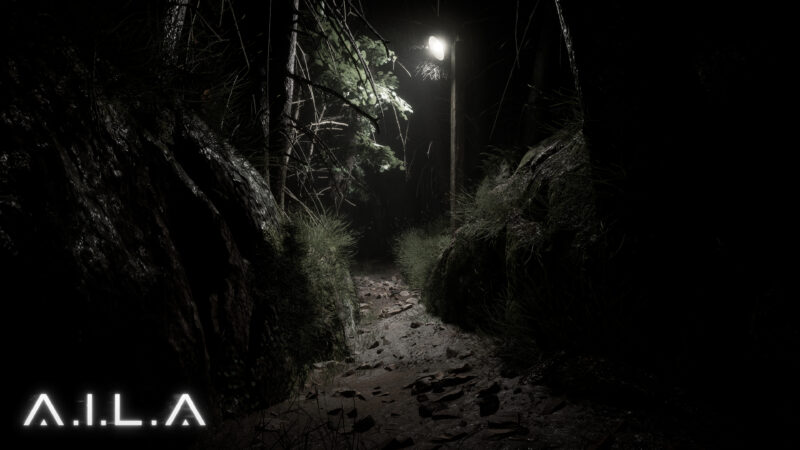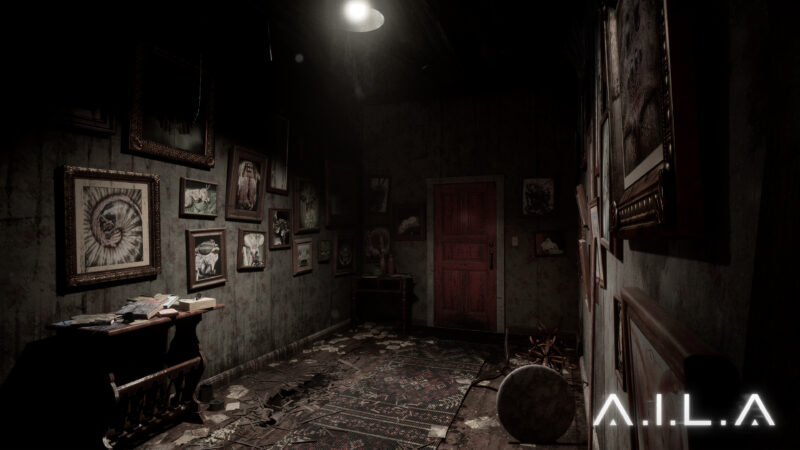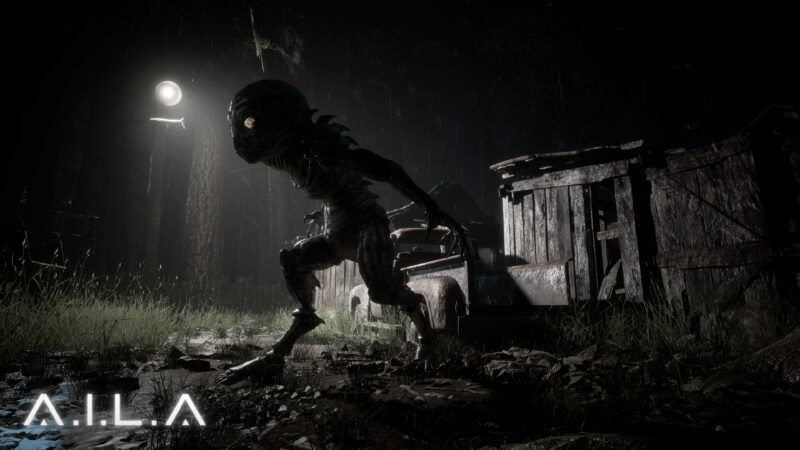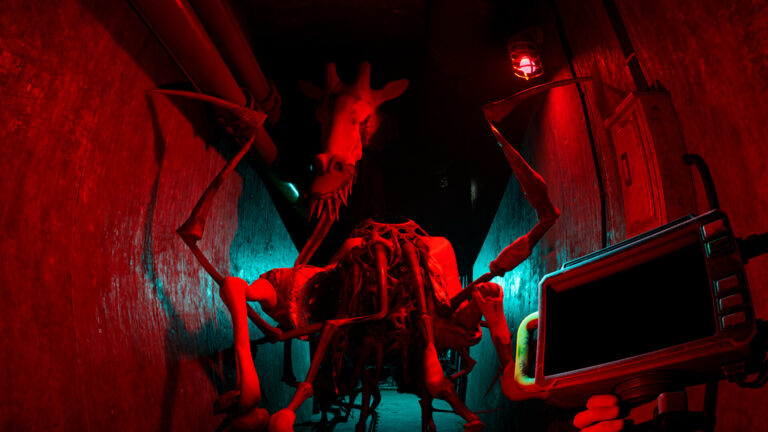I spent my afternoon enjoying an early press preview of the upcoming horror game from Pulsatrix studios, A.I.L.A. I particularly enjoyed the second “experience” or level created by A.I.L.A., allegedly the game’s rogue AI. This experience, “Woman on the Road” or WOTR, struck me as being reminiscent of classic survival horror franchises with a touch of creepy aliens from, you guessed it, outer space. From the moment you step into Woman on the Road, one of the core survival-horror modules in A.I.L.A., you sense that this isn’t just the typical zombie or haunted‐house affair.
You play as Samuel, a game-tester for a revolutionary new synthetic intelligence named A.I.L.A., designed to tailor horror experiences to your darkest fears. The WOTR segment specifically leans hard on tension and impressive environment design.
It’s survival horror (in spirit) with the type of pacing, atmosphere and visual polish that fans of the genre will immediately recognize. The game doesn’t hold back from its overt Resident Evil references either (the cat food brand you can feed your in-game cat refers to one Albert Wesker himself.)
Graphically, A.I.L.A. leans into the next generation. Built in Unreal Engine 5 and incorporating advanced lighting (Lumen), the WOTR section delivered a standout visual experience in the demo I played. Scene after scene is drenched in layered realism: the headlights of your vehicle glint off rain-slick pavement, the flicker of a diner sign casts long shadows, and inside, the décor betrays seeming normality before tilting into menace.
It reminded me not only of the classic survival-horror atmosphere of the early Resident Evil games, boasting tight corridors, limited sight-lines, a sense of helplessness, but also of more modern, cinematic horror-design, where every corner of the environment tells part of the story.
One location in WOTR that stuck with me is the diner area. At first glance it read like any roadside stop: tired linoleum floors, neon signage, gross coffee offered by a tired-looking employee. It was like a calm-before-the-storm feel, the juxtaposition of the mundane and the uncanny, and reminded me strongly of the echoing, wood-and-lamplight world of Alan Wake — except here the threat is closer, more intimate. The diner becomes a safe haven that isn’t necessarily safe at all, a crucible for dread rather than respite.
The WOTR experience, while still early and subject to change, also delves further into how A.I.L.A. herself plays a role in the unfolding story. You’re not simply navigating environments — you’re testing the scenarios she has generated. She adapts, she learns. What exactly her agenda is remains unanswered during this preview. Is she the benevolent overseer or something far more ambiguous? That ambiguity works in the game’s favor, because the unknown is scary.
The fact that A.I.L.A. crafts the horrors you’re forced to survive elevates the setup, as this isn’t just monsters, it’s machine-driven dread designed specifically for you and speaking to our current, technologically-driven world.
The survival mechanics lean on exploration, resource-management and environmental puzzle solving rather than nonstop gunfire, though combat does have its place, particularly against the alien enemies you’ll encounter here. In the WOTR module you’ll find yourself coming across an unexplained crater, a dilapidated farmhouse, and the strange mystery of a pregnant woman who lost her baby in an accident. The pacing is more slow-burn compared to pure action horror, which is a plus in my view, because horror is often more effective when you’re uncertain and isolated.
The overt comparisons to Resident Evil are inevitable, and they feel appropriate, even if a bit on-the-nose. The layout of environments, the tension of encountering something you don’t expect, and the interplay between safe spaces and danger zones are hallmarks of classic survival horror. Pulsatrix seems to have incorporated them with a more modern twist. But it’s not derivative, as the setting, the techno-horror twist, and the AI-driven narrative all give it fresh identity. On top of that, the high-fidelity visuals, impressive in quality for an indie developer, raise the bar.
For indie horror fans who like a story element, the unanswered questions around A.I.L.A.’s role add an extra layer of intrigue. Why is the AI generating these test-scenarios (and what happens when the line between the tests and “real life” blurs?) The WOTR module gives hints but holds off on full answers, which in a preview sense is exactly what you want.
Despite my questions largely going unanswered, I found the WOTR experience genuinely fun. The atmosphere isn’t just oppressive for oppression’s sake, as there are moments of relief, exploration, dread, and reward. Parking your car in the rain, stepping into the diner, noticing a detail on numerous lore files, feeling the flicker of something in the dimness of the farmhouse, all of it was built into a package that I enjoyed.
A.I.L.A.’s “Woman on the Road” module delivers a compelling slice of what’s to come, with a blend of survival-horror structure, high-end visuals, curious narrative hooks, and an odd, uncanny atmosphere. While the full game remains unreleased, and many questions remain (not least: what exactly A.I.L.A. wants and how far the experiences will branch), this preview gives me confidence that Pulsatrix Studios are delivering a horror title worth your wishlist.








